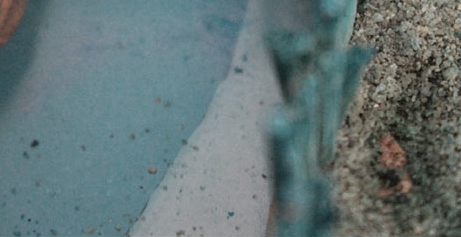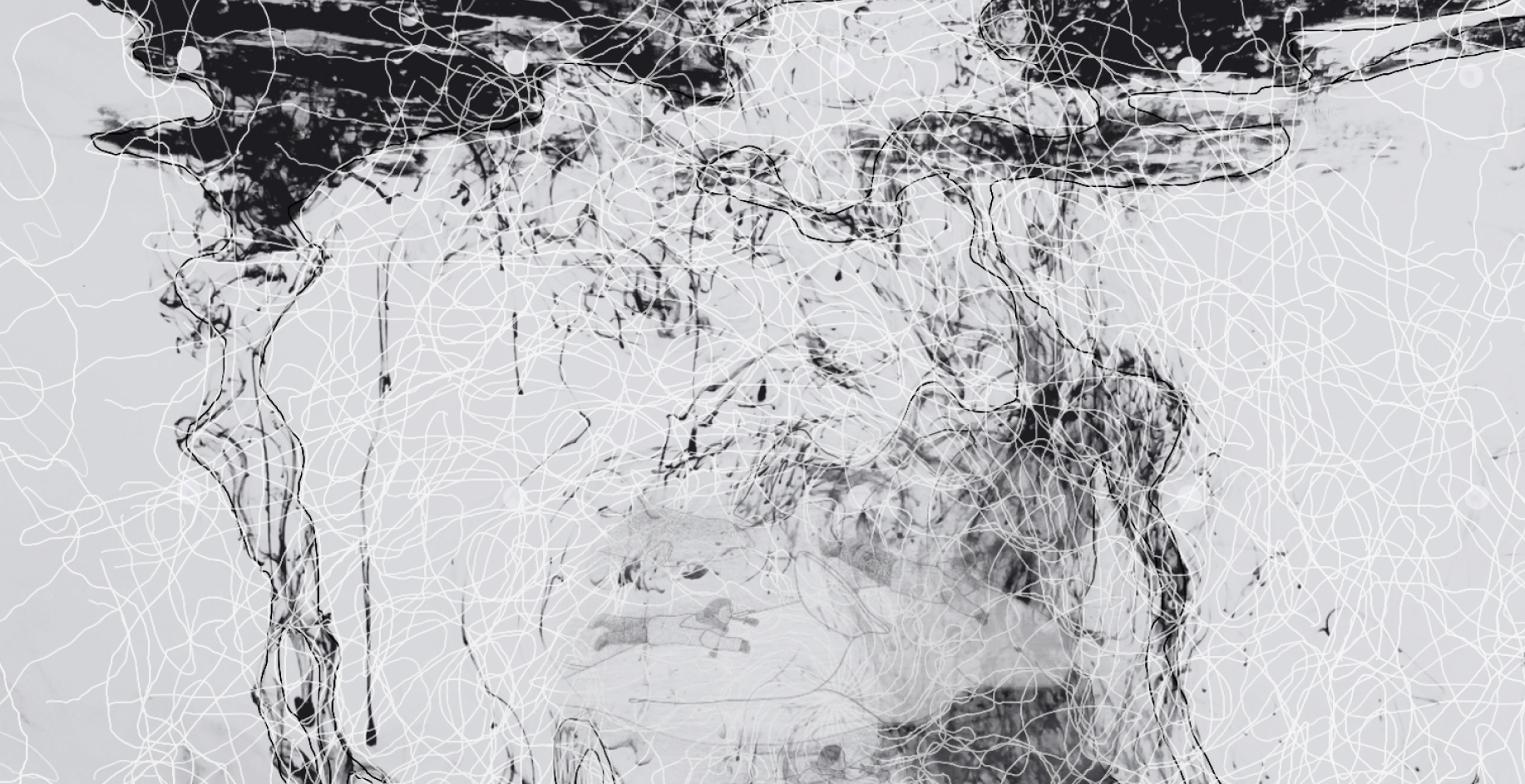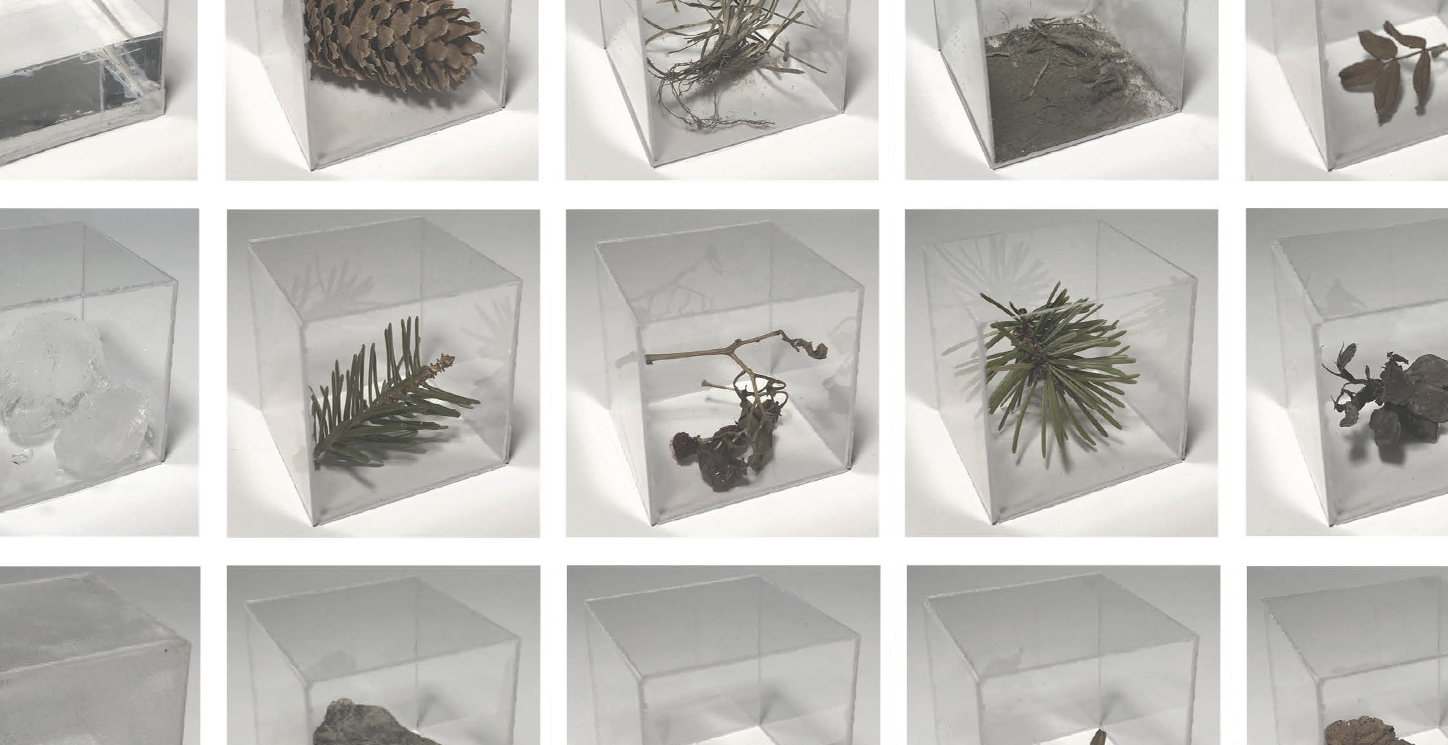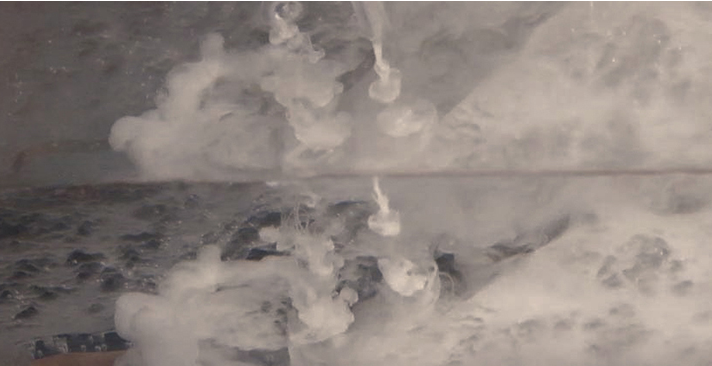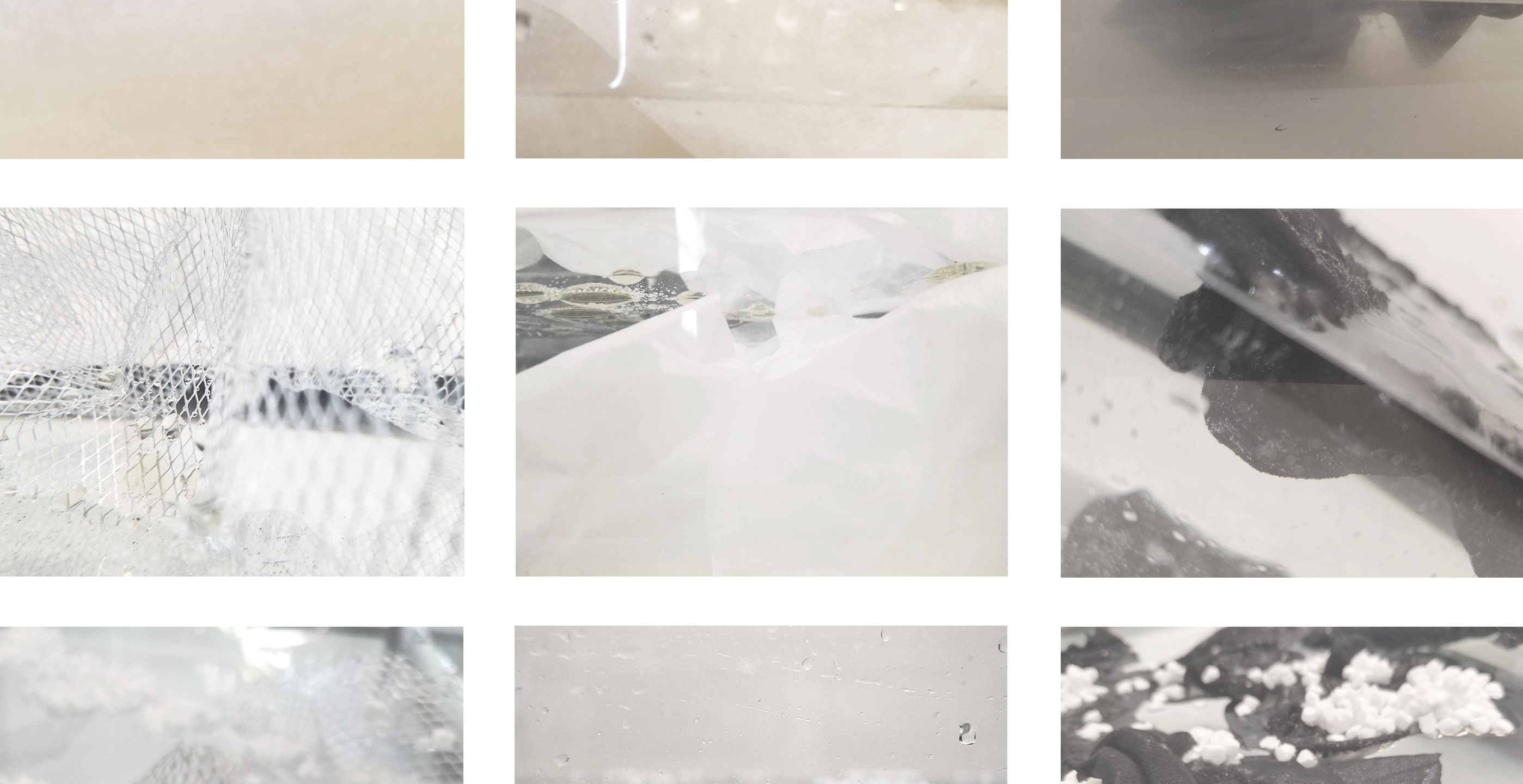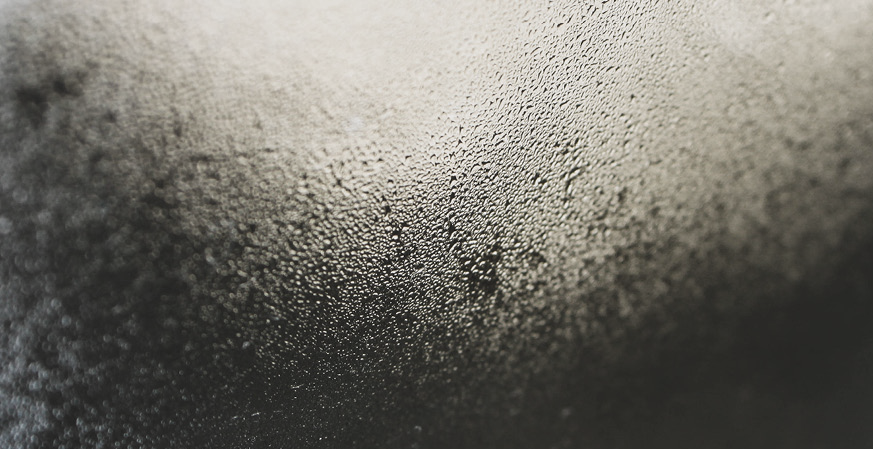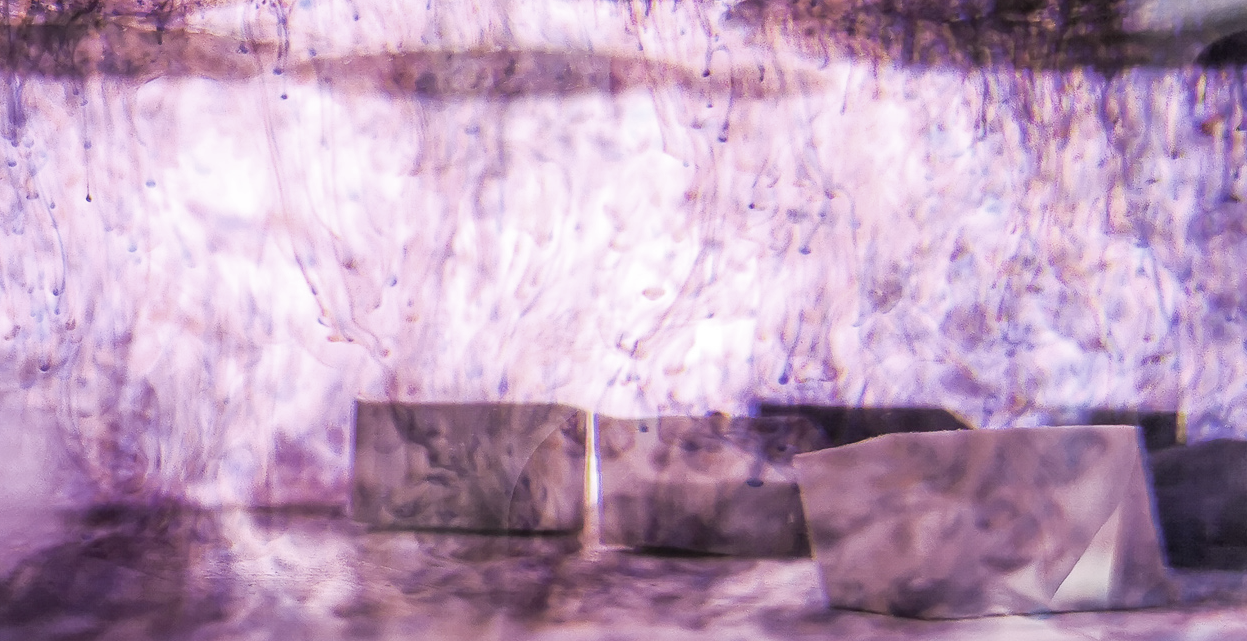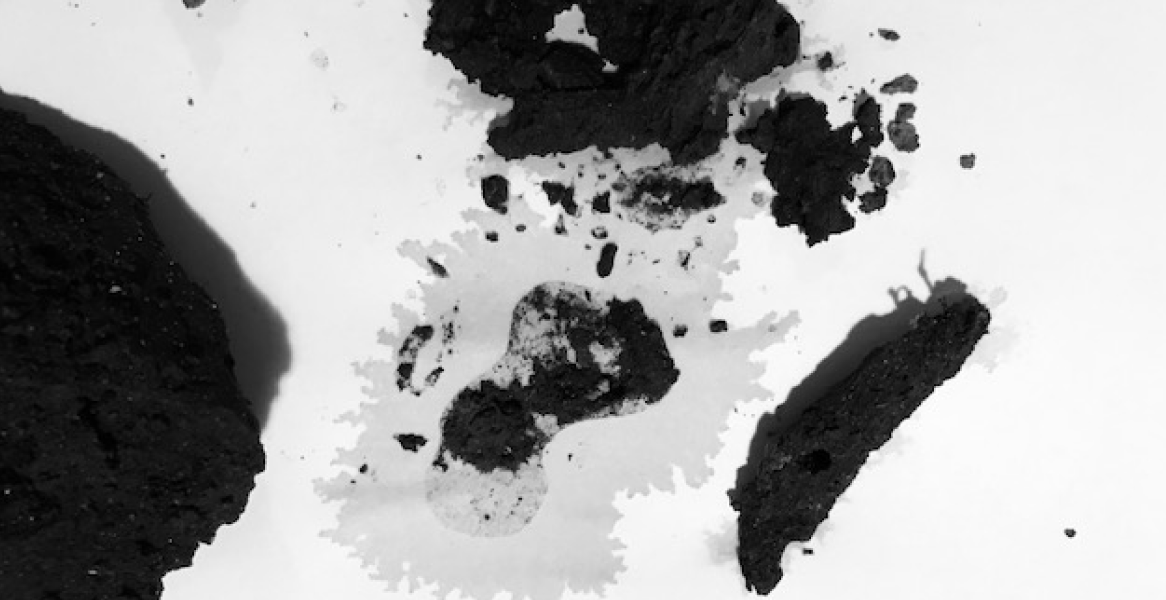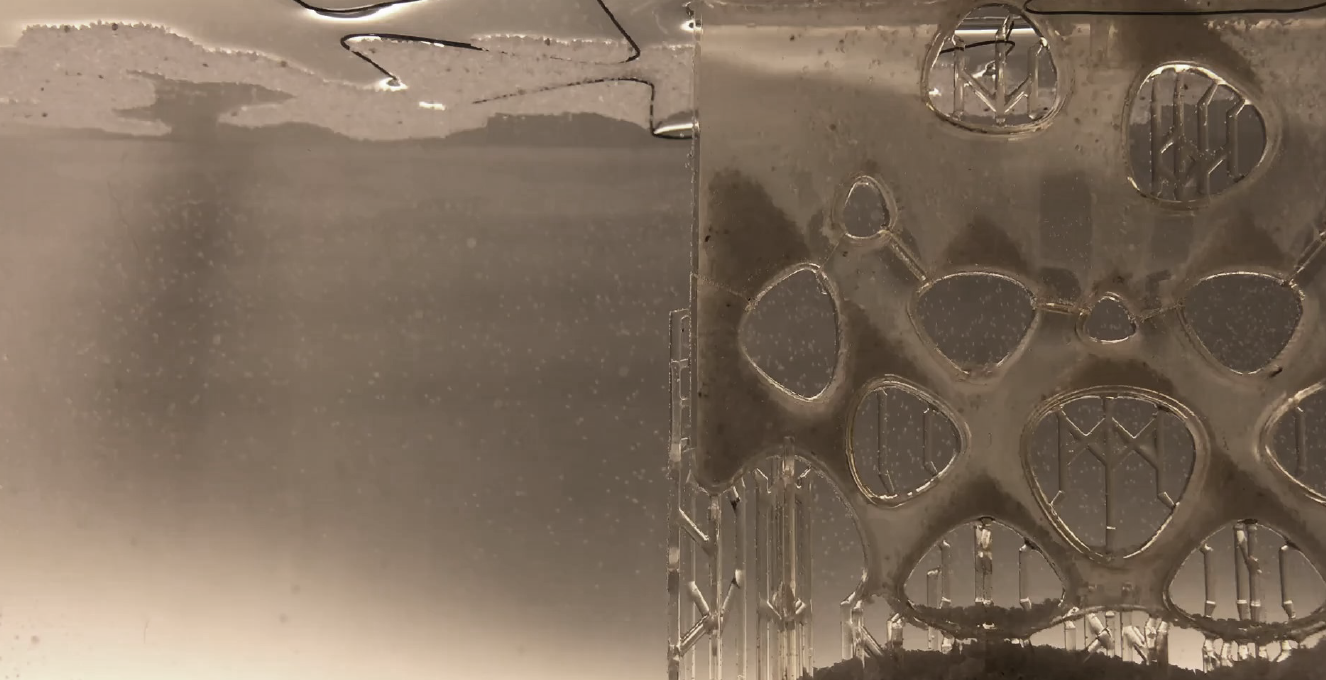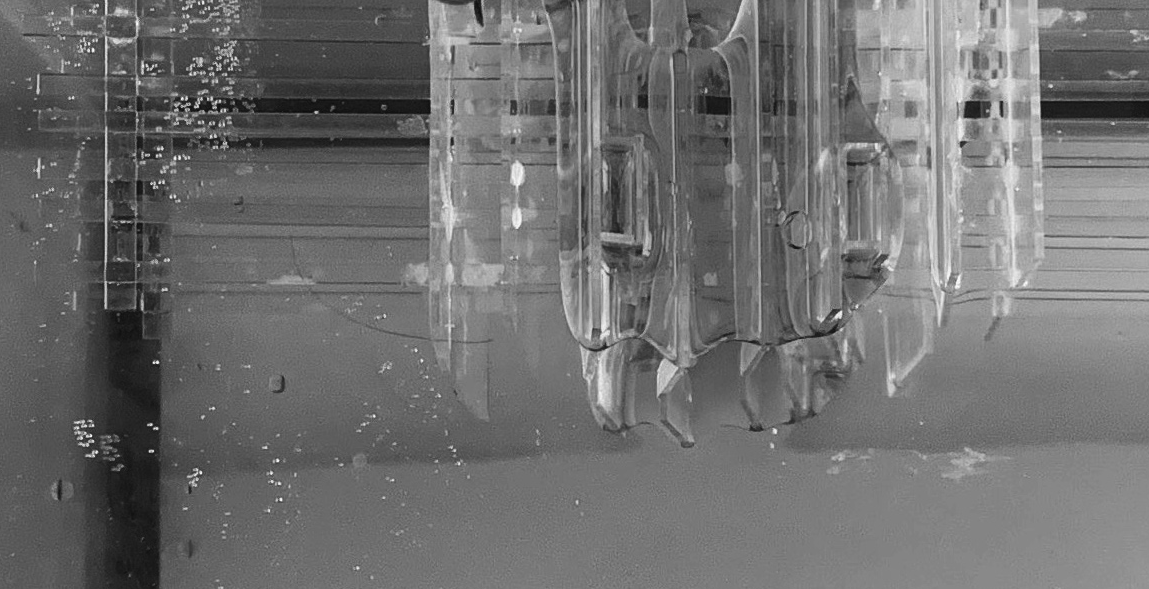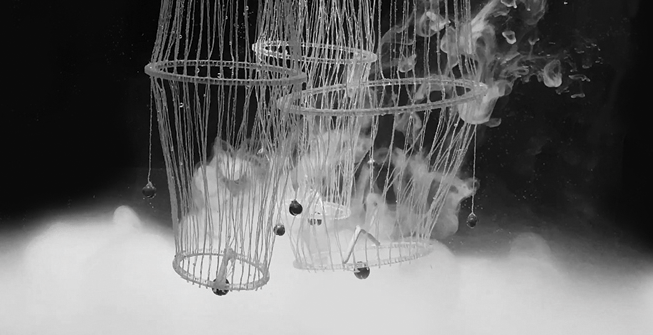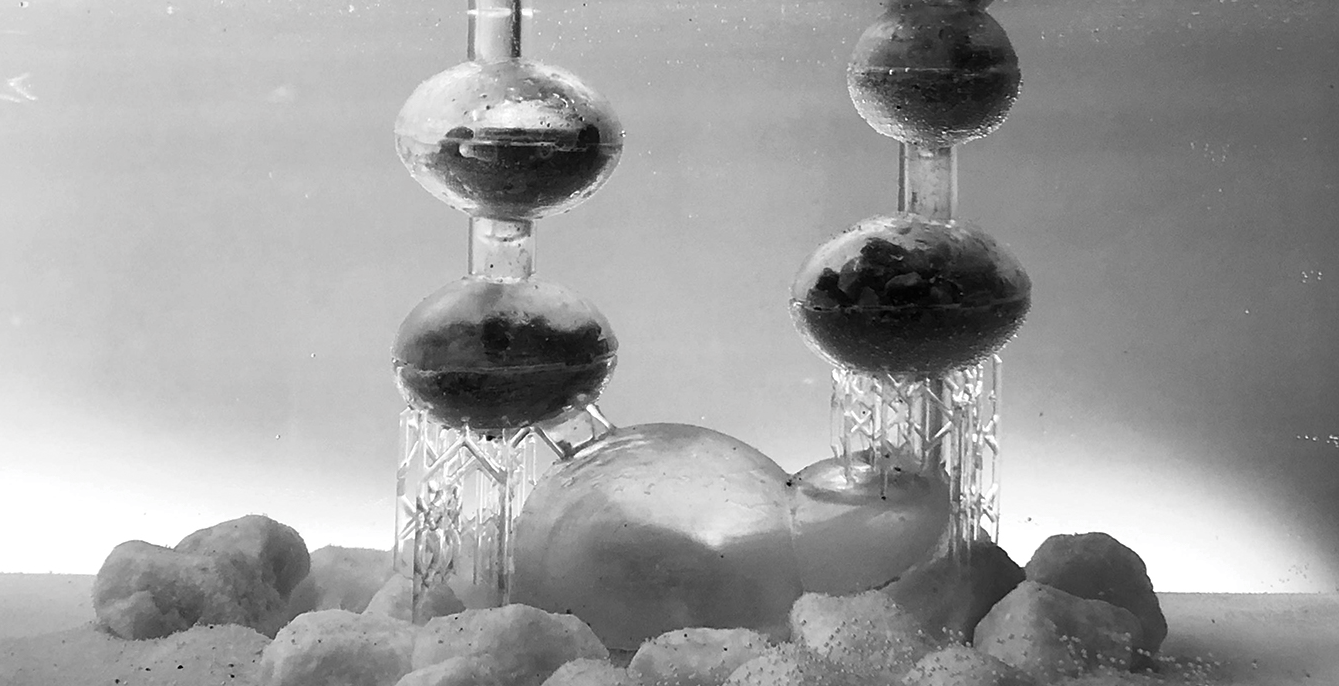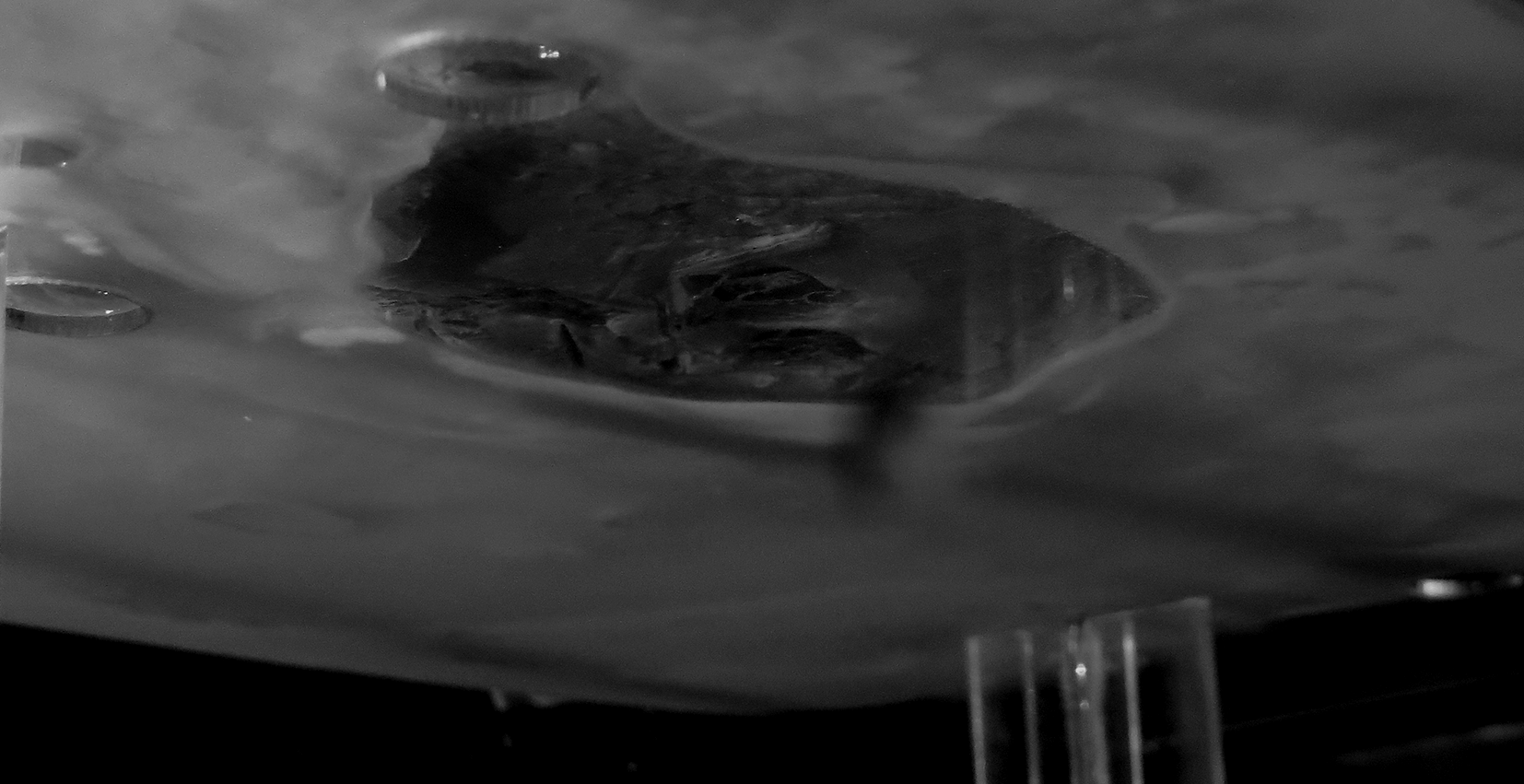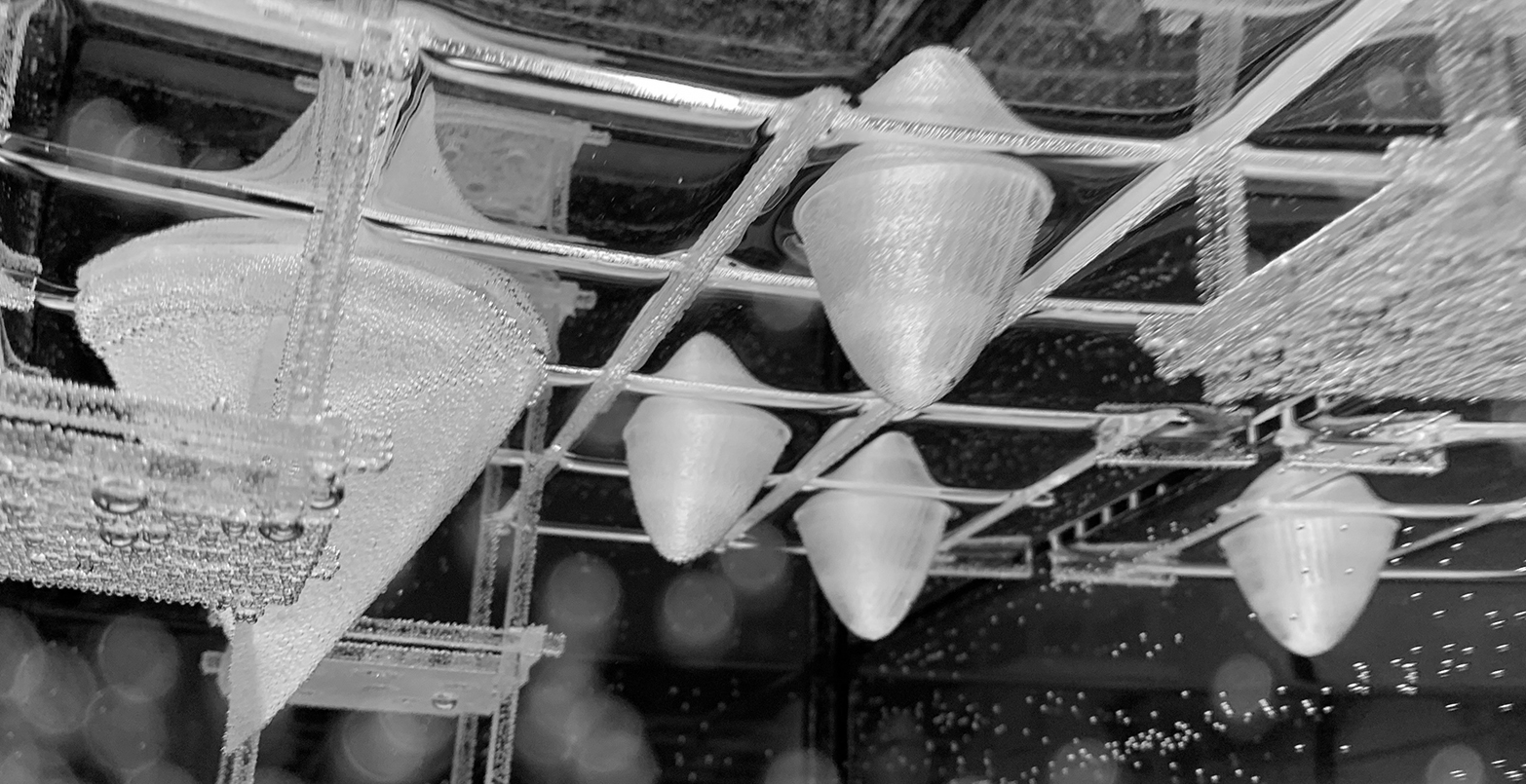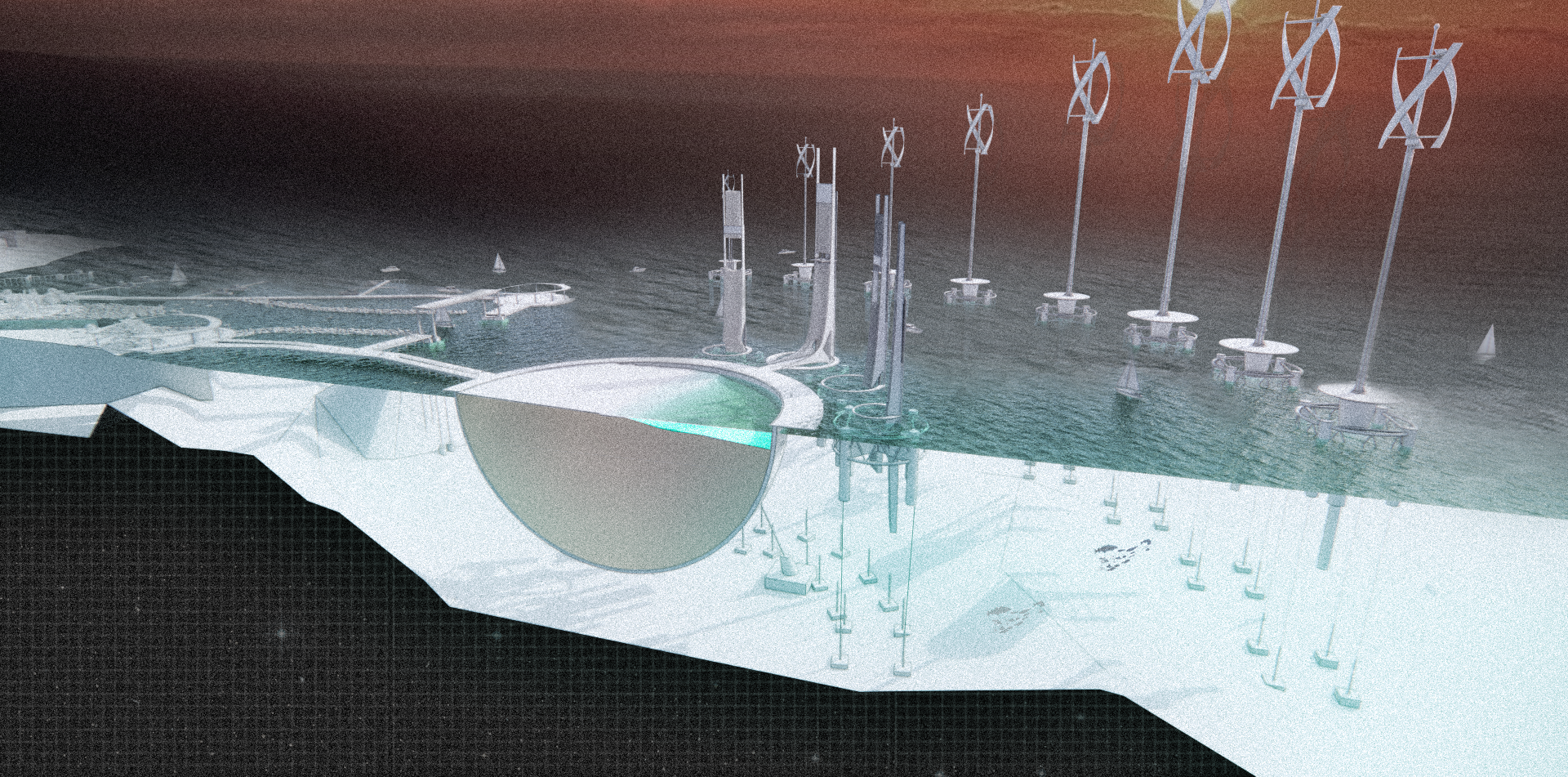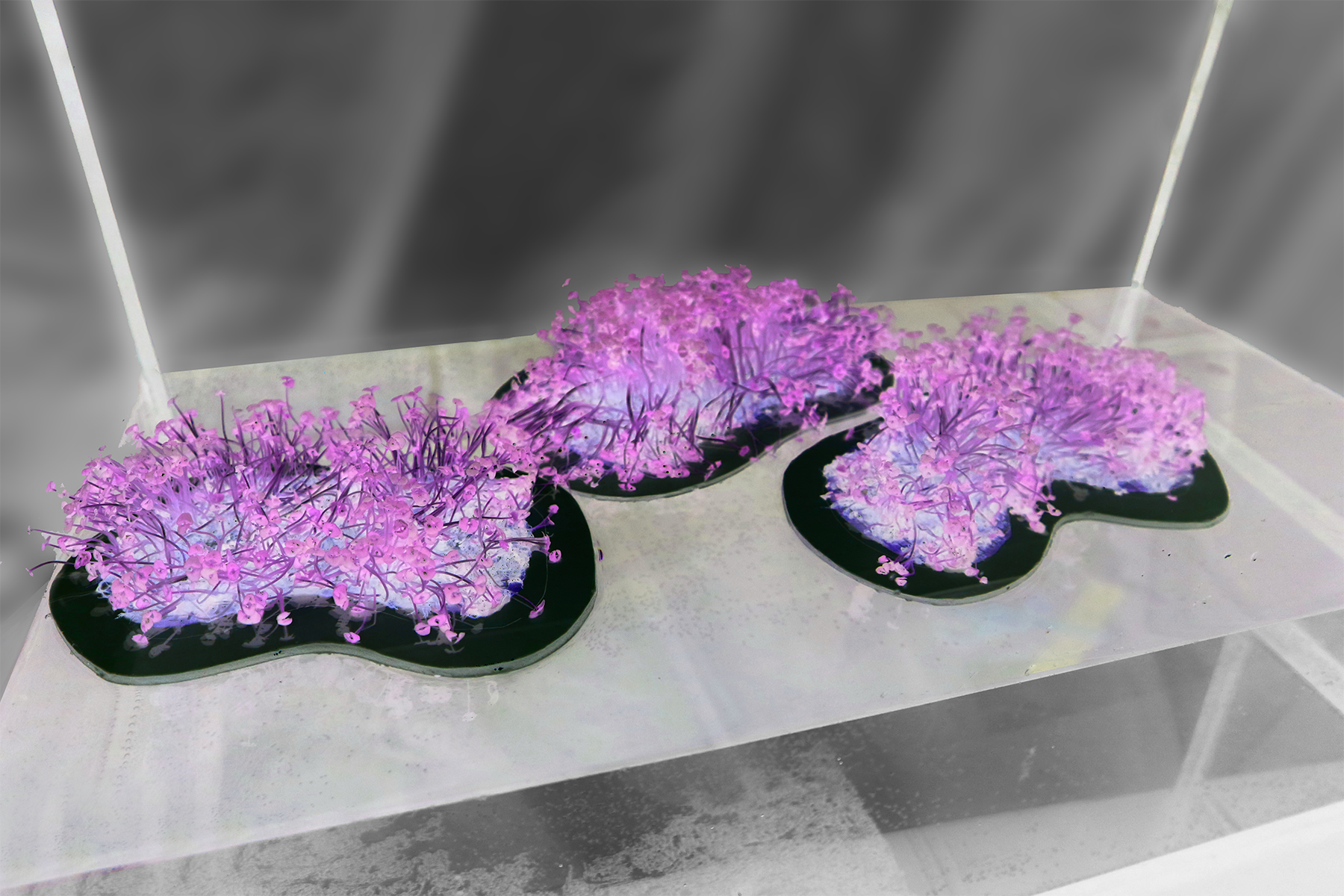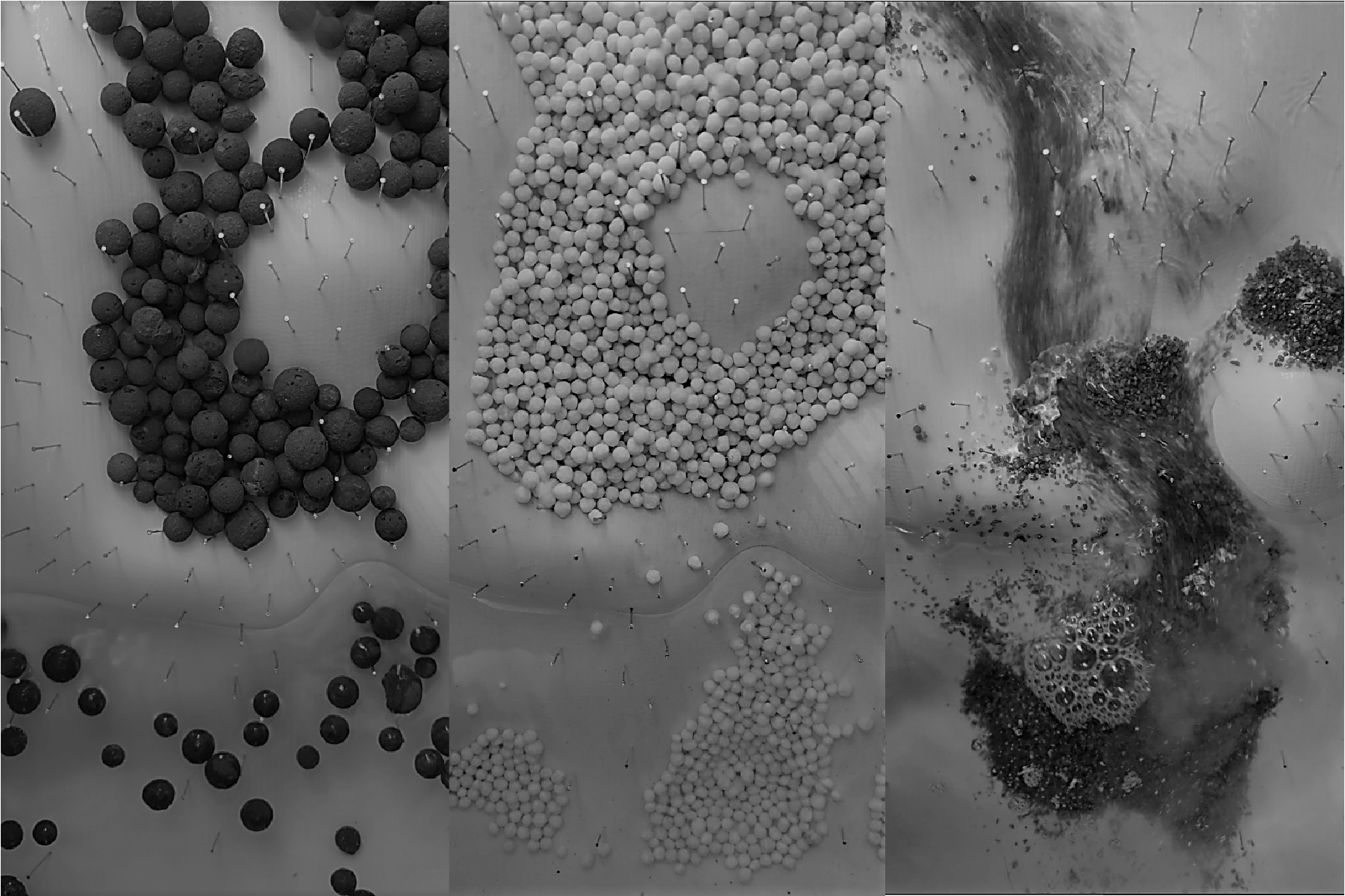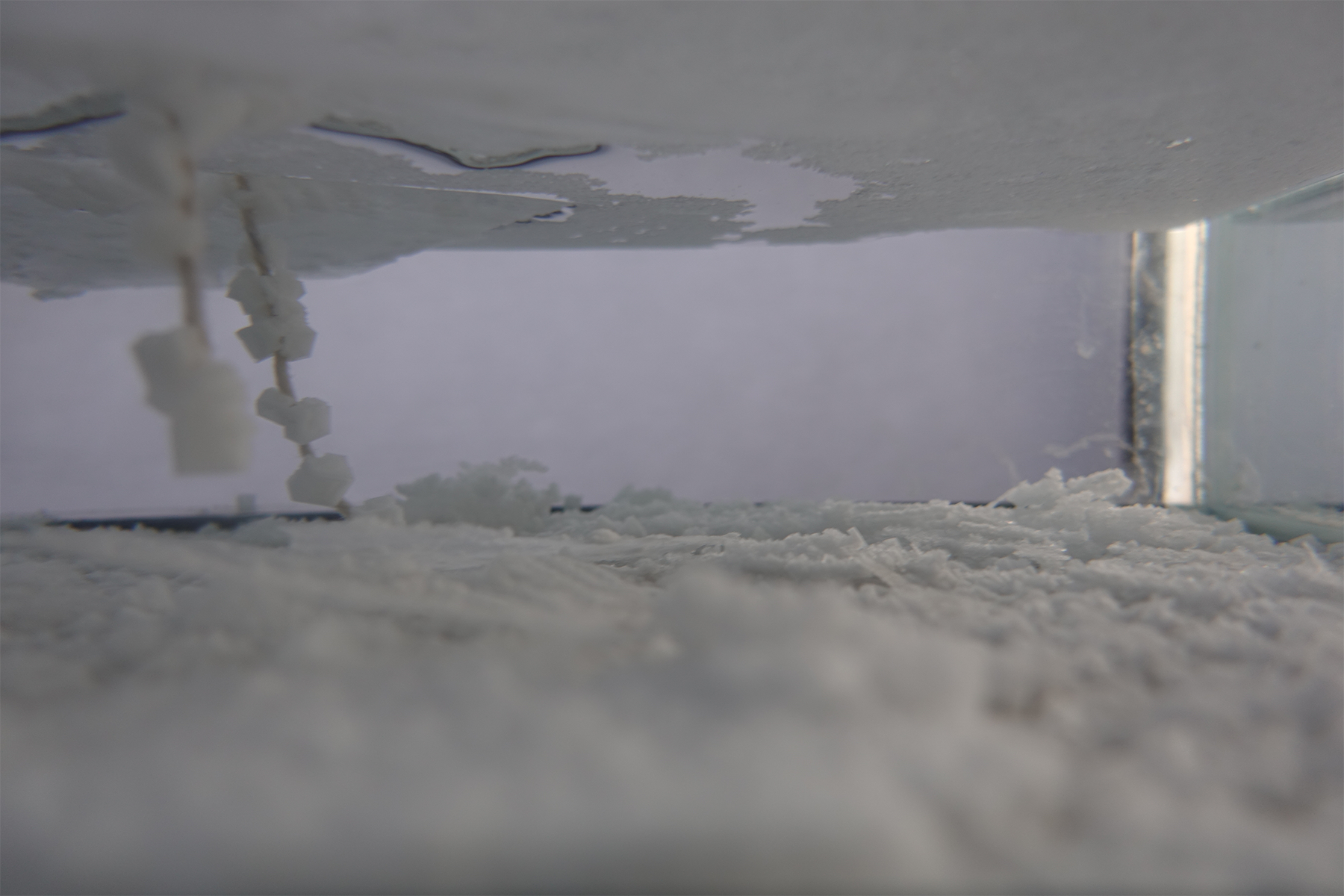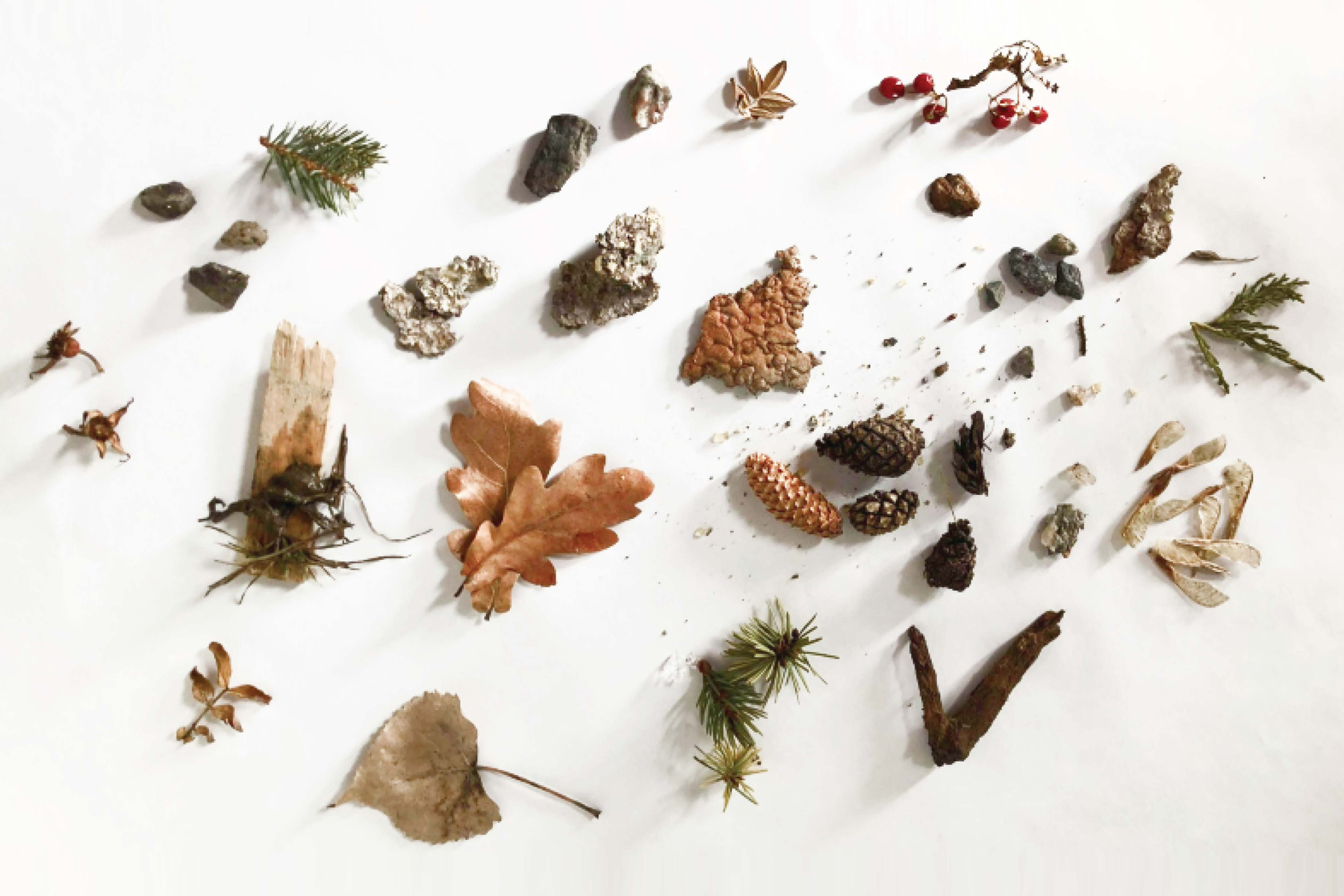
Found artifacts of nature gathered on a walk are carefully placed on the table. Their beauty is magnified by the saturated image. These collected artifacts evoke a sense of romance and delight, perhaps stirring memories of a pleasant hike.
Shelby Hagerman
Tank Worlds : Miniaturising the Gigantic
Collecting (Sub)Nature
This project frames the device of the tank as a vitrine to explore the agency, selectivity and control of human collectors as well as to study the attributes and practices of memorializing artifacts that evoke memories. The vitrines are contemplated as devices of objectification, exploring their relationship with the found objects that are placed within them. David Gissen’s, A More Monumental, Non-Naturalistic Environment, contemplates acts of memorializing nature through abstract representation. Enter the vitrines.
The vitrines engage various scales, acknowledging that they contain miniature worlds while also making evident the worlds that lie beyond their control. The selected artifacts provoke our human agency in the process of collecting. They ask us to confront our inconsistent behaviours and attitudes about objects of nature as we oscillate between controlled delight and untamed disgust. The photographic representations of the work contrast the ordered and pristine world of the vitrines (romantic naturalism) with the messy reality of the world that overtakes them (subnaturalism). The characteristics of the vitrines themselves are challenged as their imperfections are revealed.
Gissen’s work, Subnature: Architecture’s Other Environments, elaborates on how the nonhuman worlds that surround our everyday are selectively celebrated as beautiful and delightful, while other worlds, forms, and objects are deemed ugly and displeasing and are therefore erased from our consideration and design thinking. These outcasts are what Gissen identifies as ‘subnatures’ and they constitute the artifacts that the vitrines in this project ultimately embrace, subverting what we typically observe as subjects of wonderment and joy.

The artifacts are carefully photographed. They are selectively cropped, descaled and decontextualized.
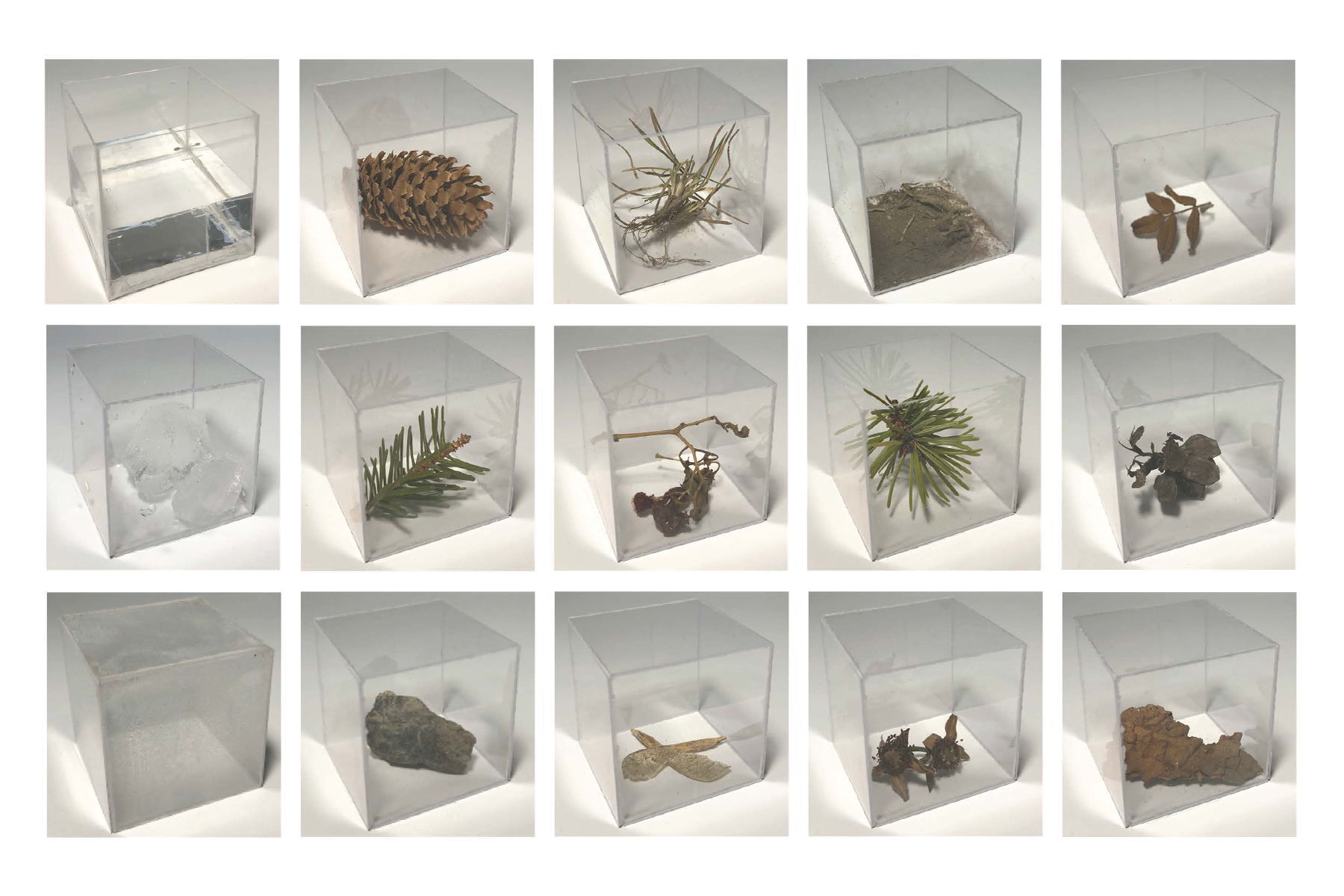
The artifacts are placed in a plexiglass vitrine (miniature tank). Nature is objectified. A pristine photoshoot systematically captures the vitrines satisfying the urge to order and curate. Some artifacts are not selected to be displayed, they are omitted.
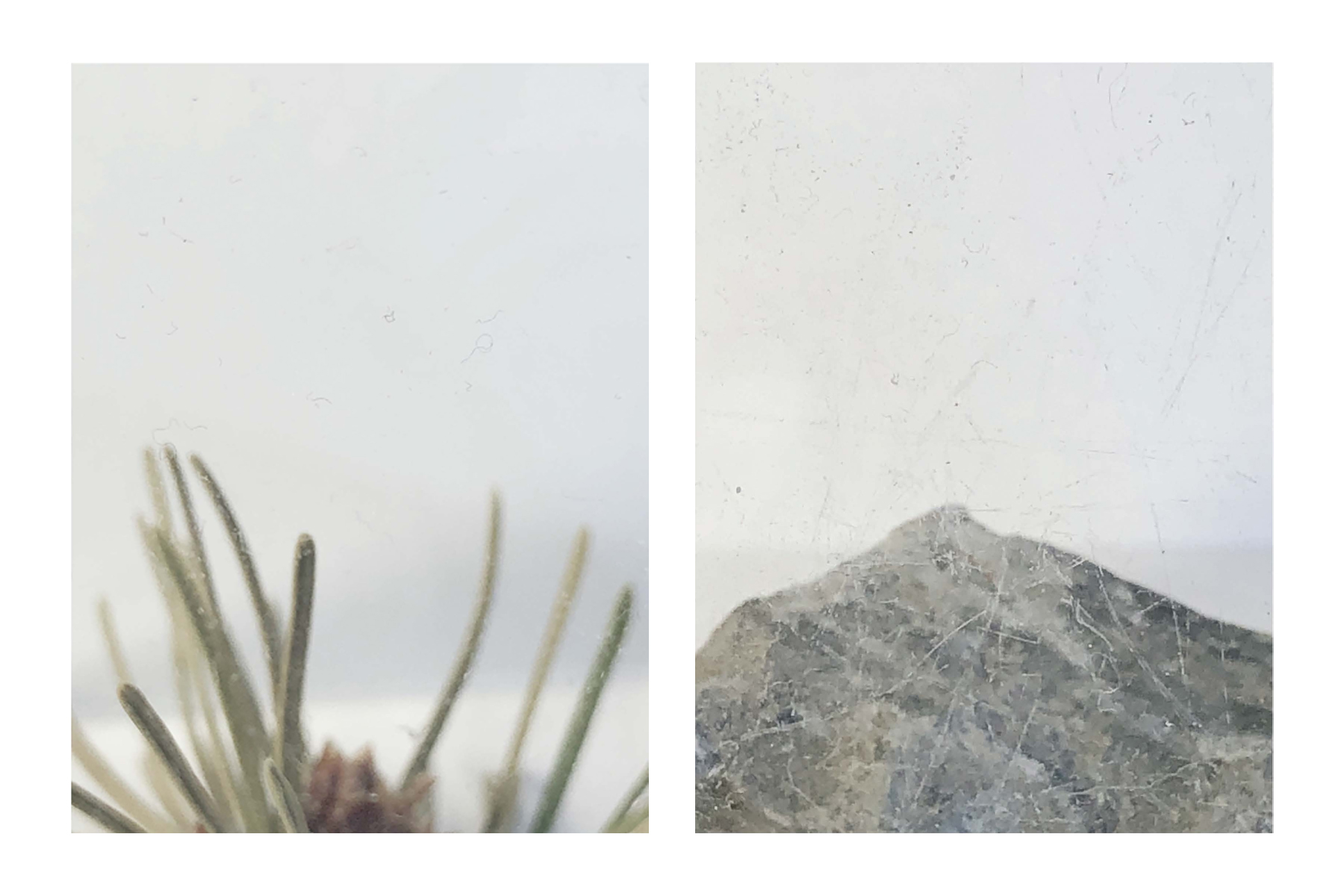
The vitrines themselves become subject to inspection. Dust has collected on the surface of the plexiglass, the condition of sterility must be preserved. The rock has scratched the fragile interior of the vitrine as it was moved around.
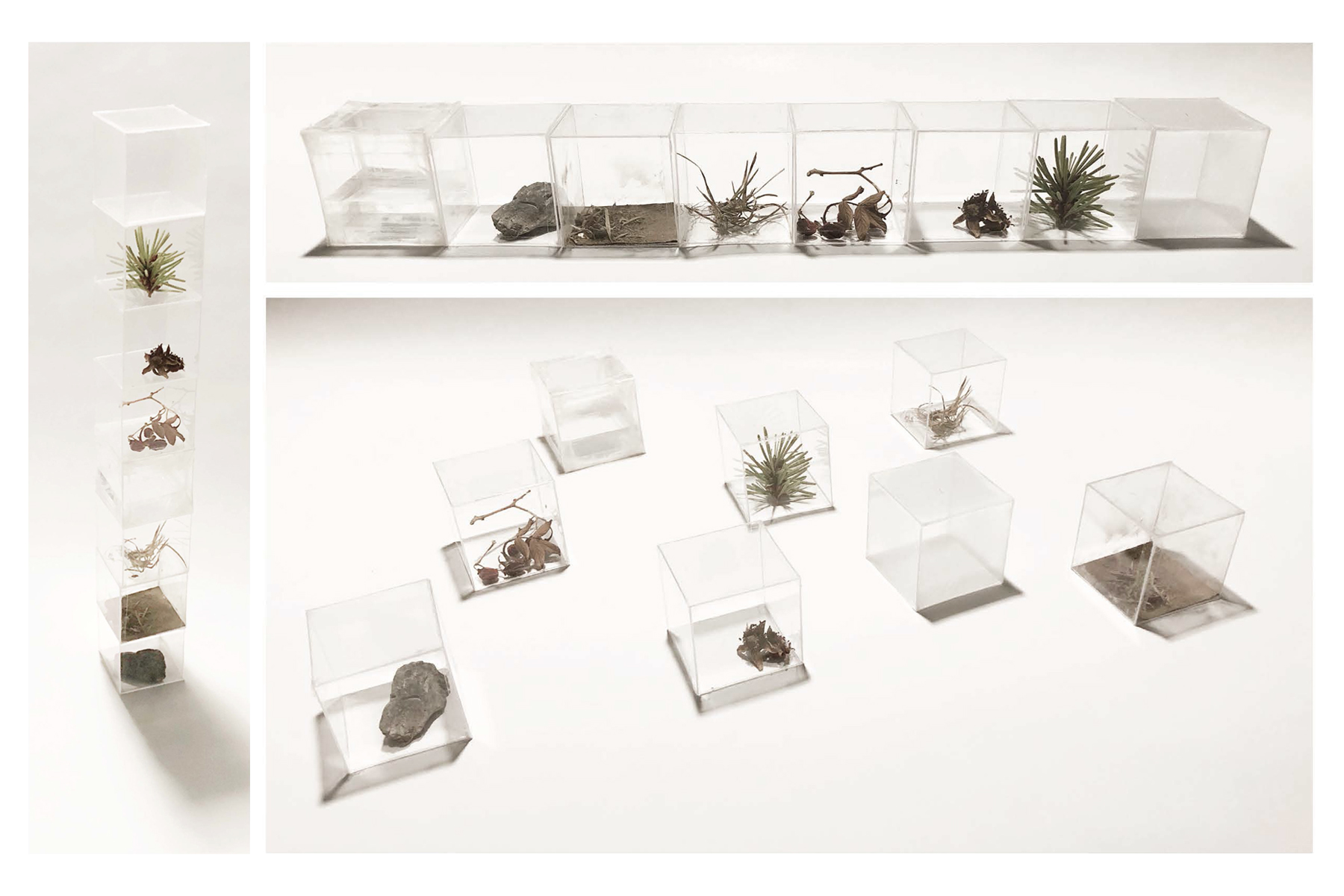
The vitrines are curated into several arrangements, forming a multitude of interpretations and abstract narratives.

The sandy dirt has speckled the sides of the vitrine, also due to it being moved and rotated. The clay surface of the tank has created scratches on the exteriorof the vitrines as well. Reality introduces messiness.

The vitrines contain the subnatures we deny, the subnatues we erase from our memory. The vitrines are not clean little plexiglass containers, they are painted with the messiness of the artifacts they encounter. The vitrines are not staged in a sterile or controlled photoshoot. They rest uncomfortably within the context they are depicting.
In these images, the vitrines are almost unidentifiable, they dissapear. The images do not depict nature. If nature is - untouched by humans, there is no nature. The world is messy and the images reveal it. They do not evoke delight, they invite your grimace.

